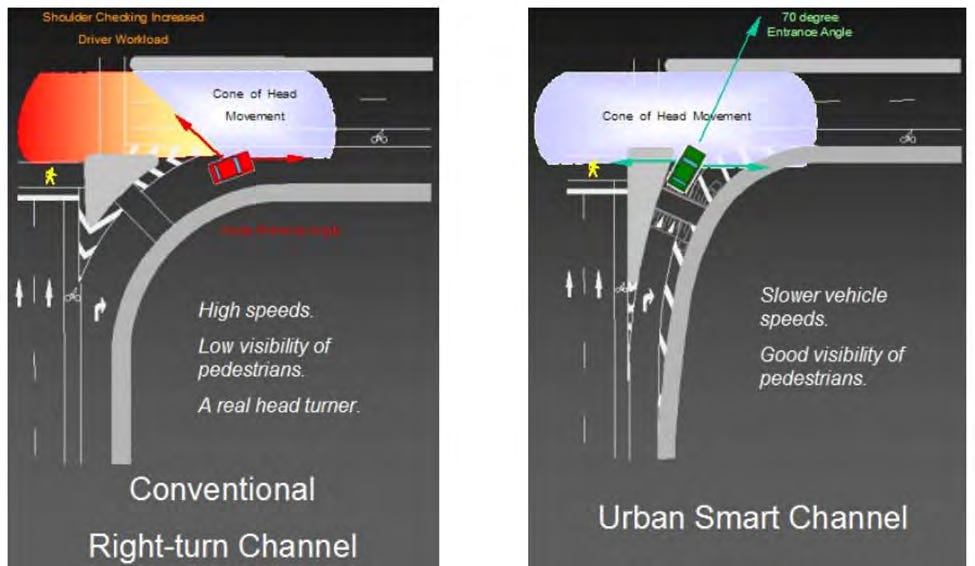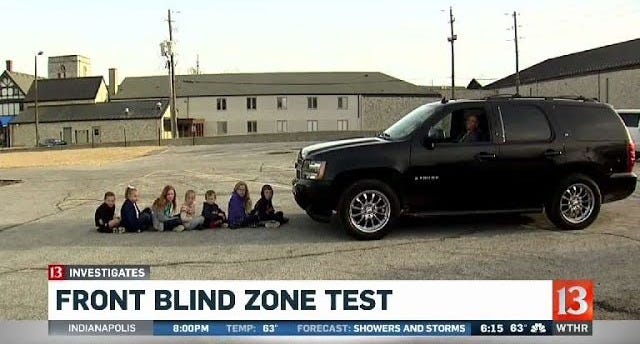In October 2023, Strong Towns Langley embarked on an important project to address community concerns about slip lanes in Walnut Grove, particularly along the 88 Avenue corridor. We placed posters at intersections with slip lanes that linked to a survey, gathering over 30 responses from residents about their experiences navigating these challenging intersections.
The results were clear: 63% of respondents felt the slip lanes were unsafe for pedestrians, and a majority believed the slip lanes made the intersections worse overall. Only 38% felt the current design was acceptable.
Our Advocacy in Action
In January 2024, we released a video documenting these concerns, highlighting how slip lanes prioritize vehicle flow over pedestrian safety. The video featured local urban youtuber Uytae Lee discussing how these intersection designs force pedestrians to cross uncontrolled crosswalks while drivers are often looking left for oncoming traffic instead of right for crossing pedestrians.
Watch our video on slip lanes and pedestrian safety here
Council's Response
On September 9, 2024, Township Council passed a resolution directing staff to explore pedestrian-oriented design options for the intersection of 88 Avenue and 208 Street.
Now, at the February 24, 2025 Regular Meeting, Engineering staff have presented four potential options for improving this key intersection:
Option 1 ($250,000): Install mountable aprons on all approaches
Option 2 ($465,000+): Reconstruct all four right-turn islands as "Smart Channels"
Option 3 ($645,000+): Implement Smart Channels on the Southbound and Westbound corners, and convert the Northbound and Eastbound corners to 90-degree turns
Option 4 ($745,000+): Convert the entire intersection to 90-degree turns on all approaches
You can read the whole staff report, taken from today’s council agenda, here:
Our Position
Strong Towns generally advocates for making small bets and incremental improvements. However, the direction of those improvements matters significantly - any small change is not necessarily a good small change. While the first 3 options might appear as “small bets”, I would argue they are instead costly endeavors that fail to establish a clear trajectory towards a more people-oriented place.
Option 1 is problematic. Cars can still mount the aprons if they wanted, essentially rewarding aggressive drivers with a faster and easier turn if they have poor road etiquette. This is a fundamental problem we see across North American road design in general, for example drivers who race dangerously towards a green light are rewarded by making it through on time before it changes.
Some of the most deadly vehicles for pedestrians, due to the large front blind spots, are large SUVs and trucks, the very vehicles most likely to mount the apron in this scenario.
It also doesn't solve the unpleasant experience of standing on the pedestrian islands surrounded by traffic noise while waiting for the light to change, nor does it address the inadequate size of the southeast island.
Smart Channels in Options 2 and 3 are a very small “improvement”. Smart Channels still maintain uncontrolled crosswalks. The angle is safer for pedestrians and drivers, which is good, but this option still prioritizes traffic flow over pedestrian comfort and safety. This hybrid approach in Option 3 is interesting, but the report doesn't explain why specific corners were selected for different treatments. Without clear data to support these choices, it's difficult to justify. The price tag is also very high for a marginal improvement.
Option 4 of just eliminating all the sliplanes provides the best experience for pedestrians, though it comes with the highest price tag. That said, this is the only option that represents a 100% true pedestrian improvement project.
As a resident of Walnut Grove who frequently drives around the neighbourhood, I also challenge premise at the start of the report. Living in the area and observing the intersection, there are not huge traffic backups through the slip lanes 90% of the time. Additionally, the lack of reported deaths or injuries doesn't mean the intersection doesn't feel unsafe - as our survey demonstrated, this perception suppresses walkability and livability in our community.
The recommendation, Option 1, is ultimately a continuation of the status quo, it’s easy and cheap, but fundamentally ineffective.
Our Recommendation
Although the most costly, we recommend Option 4. As a second choice, we would suggest Option 2 or 3, but only if the crossing signal and light is extended across the crosswalk leading to the island, ensuring cars must stop when a pedestrian crossing button is pressed and the crossing becomes active (perhaps with no right turns on red when pedestrians are present).
We highly recommend asking staff to explore local, provincial, or federal grants that could offset the cost of Option 4. In the 2008 the Township of Langley council secured a $1 million grant from the Province from the Local Motion program to help with the cost of constructing a pedestrian and bicycle walkway over 200 Street and 68 Avenue. In British Columbia right now there is the Active Transportation Infrastructure Grant that might be an option. It’s likely Option 4 is the only option that qualifies for this as a meaningful pedestrian improvement.
Council will be voting on this matter at today’s 1:30pm meeting. If you care about making our streets safer for everyone, particularly our most vulnerable road users, we encourage you to reach out to your councillors before the vote.
Strong Towns Langley is a community group dedicated to making Langley, British Columbia a better place. We advocate for incremental development, sustainable transportation solutions, housing accessibility, public spaces, and responsible growth strategies. Our group is part of the larger Strong Towns movement, focusing on creating financially resilient and people-oriented communities.
To learn more visit https://strongtownslangley.org










Update: Council decided to receive the report, but take no action at this time.
I got rear-ended in a slip lane trying to get onto Highway One in 2020. They are dangerous for occupants of automobiles in addition to pedestrians and cyclists.